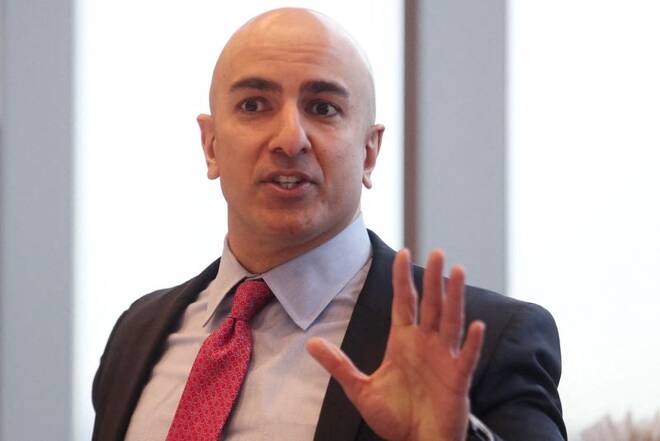Advertisement
Advertisement
Fed’s Kashkari says easing of supply chains could limit rate hikes
By:
(Reuters) - How much higher the Federal Reserve will need to raise U.S. interest rates will depend in large part on how quickly supply chains can recover, Minneapolis Federal Reserve Bank President Neel Kashkari said on Tuesday.
(Reuters) -How high the Federal Reserve will ultimately need to raise U.S. interest rates will depend in large part on how quickly supply bottlenecks can get unstuck, Minneapolis Fed President Neel Kashkari said on Tuesday.
Since March the Fed has raised its policy rate by three-quarters of a percentage point, to a target range of 0.75%-1%, and Kashkari said the U.S. central bank has indicated it will get that rate to at least a neutral level – usually estimated at around 2.5% – by the end of the year.
“The question right now that I’m asking myself, and that I’m asking my economists that I work with is, do we just have to follow through on what we’ve promised – is that going to be enough – or are we going to have to do even more?” Kashkari told the Sault Ste. Marie Chamber of Commerce in Michigan. “And I don’t know the answer to that.”
Higher borrowing costs are aimed at cooling demand so as to bring down inflation that’s now running at more than three times the Fed’s 2% target.
But rising prices are also being driven by supply constraints, both in the labor market and in the production of goods. And that’s not a problem the Fed can solve.
Private companies are doing what they can to get supply chains working better again, Kashkari said. But the war in Ukraine and China’s recent COVID-19 lockdowns tangled them up again just as they were starting to ease.
“My colleagues and I are going to do what we need to do to bring the economy back into balance,” Kashkari said. “What I don’t know is how much are we going to need to do … if we get some help on the supply side, then we won’t have to do as much; if we don’t get any help on the supply side, we are going to have to do more.”
(Reporting by Ann SaphirEditing by Paul Simao)
About the Author
Reuterscontributor
Reuters, the news and media division of Thomson Reuters, is the world’s largest international multimedia news provider reaching more than one billion people every day. Reuters provides trusted business, financial, national, and international news to professionals via Thomson Reuters desktops, the world's media organizations, and directly to consumers at Reuters.com and via Reuters TV. Learn more about Thomson Reuters products:
Did you find this article useful?
Latest news and analysis
Advertisement
